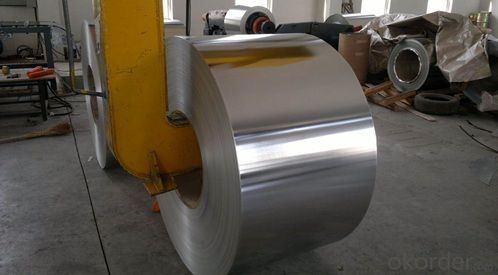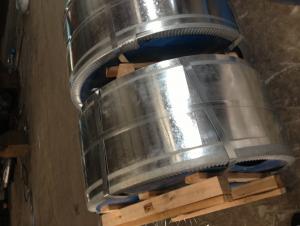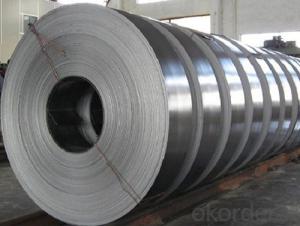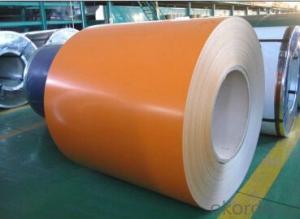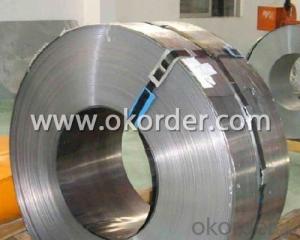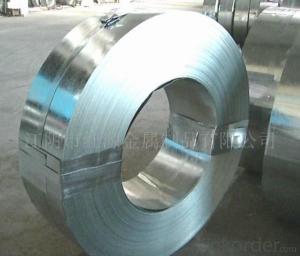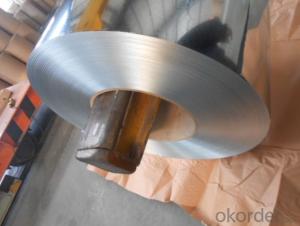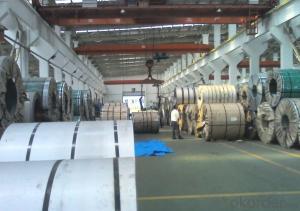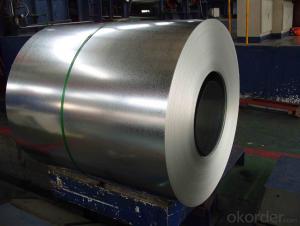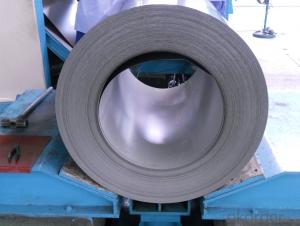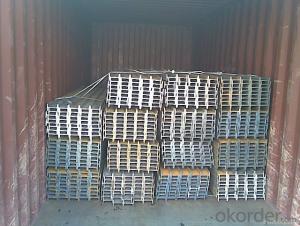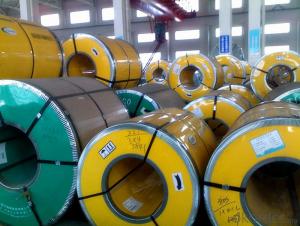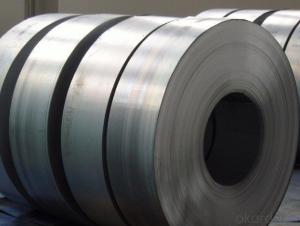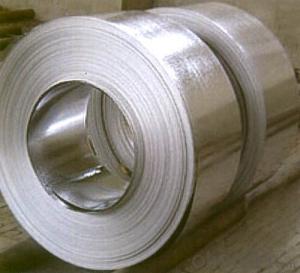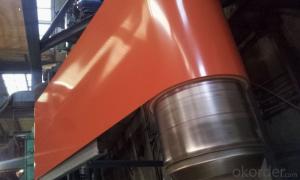Hod Dip Full Hard Galvanized Gi Steel Coil
- Loading Port:
- Tianjin
- Payment Terms:
- TT OR LC
- Min Order Qty:
- 50 m.t.
- Supply Capability:
- 3000 m.t./month
OKorder Service Pledge
OKorder Financial Service
You Might Also Like
Specification
Product Brief Introduction
Hot Dip Full Hard Galvanized Gi Steel Coil
--- Hot Dip Full Hard Galvanized Gi Steel Coil applies to construction field, ships building industry, petroleum,
chemical industries, war and electricity industries, food processing and medical industry,
boiler heat exchanger,machinery and hardware fields.
Product Features
. Traditional aesthetics outlook
. Suitable for new house or renovation.
. Long life service
. Tedun also provide relative ridge cap, fasteners and other accessories
Product Specification
Standard:ASTM, GB,JIS,JIS G3302 ASTM 755 EN10169
Grade: DX51D CGCC CS
Thickness: 0.12mm~4.0mm,
Width: 1250,600-1250mm
weight:3-12 MT
Chemical composition:
C | Si | Mn | Cr | Ni | P | S |
0.150 | 0.476 | 11.231 | 12.50 | 0.900 | 0.039 | 0.010
|
FAQ
1. How long will we receive the goods ?
45days after receiving workable L/C
1. how do you control the quality ?
we have our own quality control department ,we will arrange QC person to see the production line ,when goods finish ,before shipment ,our QC person will check the quality as per our test report request ,if the goods is ok ,then we issue the test report ,and we allow the goods shipping ,otherwise will not allow ship the goods.
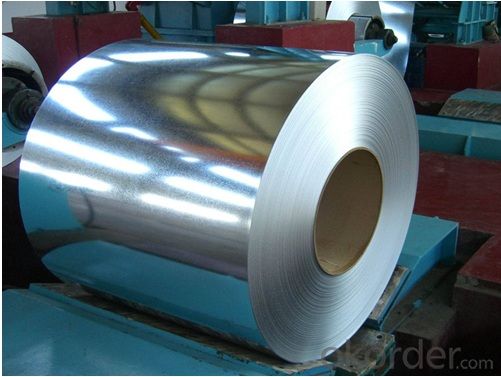
- Q: How are steel strips processed for surface cleaning?
- To achieve a clean and smooth surface finish, steel strips undergo a series of steps for surface cleaning. These steps ensure the removal of contaminants. Mechanical cleaning, chemical cleaning, and coating removal are some of the techniques used in this process. Loose debris, rust, or scale on the surface of the steel strips are commonly removed using mechanical cleaning methods like brushing or grinding. This not only prepares the surface for subsequent cleaning steps but also improves the overall appearance of the strips. Chemical cleaning is an important step in the surface cleaning process. It involves the use of chemicals or solvents to dissolve and remove stubborn contaminants such as grease, oil, or paint. The choice of cleaning solution depends on the type and extent of the contaminants present on the steel strips. If the steel strips have been previously coated with paint or another protective layer, coating removal may be necessary. Techniques like sandblasting or chemical stripping are employed to strip away the existing coating, allowing for further cleaning and surface preparation. After the initial cleaning steps, rinsing or washing processes are carried out to remove any remaining traces of cleaning agents or residues. This ensures that the surface is completely clean and ready for subsequent treatments or applications. In summary, the surface cleaning process for steel strips involves a combination of mechanical and chemical techniques to eliminate contaminants and achieve a pristine surface finish. This process is vital for enhancing the quality and performance of steel strips in various industries, including automotive, construction, and manufacturing.
- Q: Are steel strips resistant to UV radiation?
- No, steel strips are not resistant to UV radiation.
- Q: How are steel strips used in the production of tools?
- Due to their high strength, durability, and versatility, steel strips are essential in the production of tools. Various types of cutting tools, including saw blades, drill bits, and knives, are primarily manufactured using these strips. One of the key roles of steel strips in tool production is serving as the raw material for the tool's cutting edge. These strips are meticulously shaped and sharpened to create a precise cutting surface that effectively cuts through different materials. The hardness and toughness of steel strips make them perfectly suited for this purpose, as they can endure the intense forces and pressures during the cutting process without deforming or breaking. Furthermore, steel strips are employed in the production of tool components that demand high strength and rigidity. For instance, they are commonly utilized in constructing tool handles or frames, providing the necessary strength and stability for effective tool usage. Thanks to their malleability, the strips can be easily shaped or bent to fit the desired design and ensure an ergonomic grip for the user. Moreover, steel strips frequently find application in specialty tools such as measuring instruments or precision engineering tools. These tools require exceptional precision and accuracy, and steel strips can be precisely machined and calibrated to meet these requirements. The dimensional stability and uniformity of steel strips make them highly suitable for creating tools with consistent and reliable performance. In conclusion, steel strips are of utmost importance in tool production due to their ability to provide the necessary strength, durability, and versatility required by various cutting tools and tool components. By utilizing steel strips, the production of robust and reliable tools capable of performing a wide range of tasks in different industries and applications is ensured.
- Q: Are steel strips suitable for making aerospace components?
- Depending on the specific requirements and applications, steel strips can indeed be suitable for manufacturing aerospace components. This is due to the numerous advantages they offer, such as high strength, durability, and resistance to corrosion. These characteristics are crucial for aerospace components. Steel strips find utility in various applications, including structural components, fasteners, and landing gear parts. Nevertheless, it is essential to consider additional factors like weight, fatigue resistance, and temperature limitations while selecting materials for aerospace components. Depending on the specific aerospace application, different types of steel or alternative materials like aluminum or titanium might be more appropriate. Therefore, a comprehensive evaluation of the specific requirements is imperative before determining whether steel strips are suitable.
- Q: How are steel strips used in the production of electrical transformers?
- Steel strips are used in the production of electrical transformers as a core material. They provide a low reluctance path for the magnetic flux generated by the transformer, allowing for efficient transfer of electrical energy. The strips are laminated to reduce eddy current losses and improve magnetic properties, resulting in a more reliable and efficient transformer.
- Q: What are the typical dimensions of steel strips?
- The dimensions of steel strips can vary depending on their specific application and industry standards. However, there are some common typical dimensions that are widely used. Steel strips are generally thin, flat pieces of steel that are produced in a continuous strip form. The width of steel strips can range from a few millimeters to several hundred millimeters, depending on the intended use. Common widths for steel strips are between 20 mm and 200 mm. The thickness of steel strips also varies depending on the desired strength and flexibility. It can range from very thin gauges (less than 1 mm) to thicker gauges (up to 10 mm or more). The thickness is often specified in terms of gauge, which is a standardized measurement system for sheet metal thickness. The length of steel strips can be as long as the manufacturing process allows or as short as the customer requires. Standard lengths are often based on the size of the coil or roll in which the steel strip is produced. These coils can range from a few meters to several kilometers long. It is important to note that these dimensions are not fixed and can be customized based on specific requirements. Some steel strips may have special dimensions depending on the industry they serve, such as automotive, construction, or manufacturing. Therefore, it is always best to consult the relevant industry standards or specifications to determine the typical dimensions for a specific application.
- Q: How are steel strips processed for precision cutting?
- Precision cutting of steel strips involves a series of meticulous steps, including careful planning, material selection, and the use of specialized cutting equipment. The process commences by choosing the suitable steel grade and thickness based on the specific application requirements. Upon receiving the steel strips, they undergo a thorough inspection to identify any defects or imperfections that might hinder the cutting process. This inspection guarantees that only high-quality materials are utilized for precision cutting. Subsequently, the strips are typically cleaned to eliminate any contaminants that may have accumulated during storage or transportation. The subsequent step entails the actual cutting of the steel strips. Advanced cutting equipment, such as laser cutters or water jet machines, achieve precision cutting. These machines ensure highly accurate and clean cuts, meeting the required specifications. During the cutting process, it is imperative to maintain precise alignment and positioning of the steel strips. Clamps, jigs, or fixtures are commonly utilized to securely hold the material in place. To achieve the desired results, precise control over cutting speed, feed rate, and cutting parameters is necessary. Following the completion of the cutting process, the steel strips may undergo additional treatments or finishing processes, depending on the specific application. These treatments can include deburring, surface grinding, or heat treatment, enhancing the overall quality and performance of the final product. In conclusion, the precision cutting of steel strips involves a meticulous process that encompasses material selection, defect inspection, and the use of specialized equipment. Detailed planning and attention to detail are critical to achieve accurate and clean cuts that meet the required specifications.
- Q: What is the fatigue strength of a steel strip?
- The ability of a steel strip to endure repeated cycles of stress without failing is known as its fatigue strength. Fatigue strength measures the resistance of the material to fatigue, which is the gradual weakening and eventual failure of a material when subjected to cyclic loading conditions. Several factors determine the fatigue strength of a steel strip, including the steel's composition, microstructure, surface condition, and applied stress levels. Fatigue testing is commonly used to determine the fatigue strength, where the steel strip is subjected to cyclic loading under controlled conditions. To represent the fatigue strength, a stress-life curve is often used. This curve illustrates the applied stress level against the number of cycles it takes for the steel strip to fail. It helps in understanding the fatigue behavior of the steel strip and identifying its endurance limit, which is the maximum stress level it can sustain indefinitely without failure. The fatigue strength of a steel strip can vary significantly depending on the grade and heat treatment of the steel. Higher strength steels generally have lower fatigue strength due to their increased hardness and reduced ductility. On the other hand, lower strength steels with higher ductility tend to have higher fatigue strength. Considering the fatigue strength of a steel strip is crucial in applications where cyclic loading is common, such as in machinery, automotive components, and structural elements. Neglecting to account for fatigue strength can lead to unexpected failures and compromised structural integrity. In conclusion, the fatigue strength of a steel strip is a vital property that determines its ability to endure repeated cycles of stress without failing. It is influenced by various factors and is typically determined through fatigue testing. Understanding the fatigue strength is essential in designing and utilizing steel strips in applications involving cyclic loading.
- Q: How are steel strips tested for non-destructive evaluation?
- Various techniques are commonly employed to assess the quality and integrity of steel strips without causing damage. One widely used technique is ultrasonic testing (UT), which involves transmitting high-frequency sound waves into the strip and analyzing the reflected waves to identify any defects or inconsistencies. During UT, a transducer is placed on the strip's surface to emit ultrasonic waves that travel through the material. When these waves encounter changes in the strip, such as cracks, voids, or thickness variations, they reflect back. The reflected waves are then received by the transducer and converted into electrical signals. These signals are subsequently analyzed by a computer or an operator to determine the presence, location, and size of any defects. Another commonly employed method for evaluating steel strips is magnetic particle inspection (MPI). In this technique, the strip is magnetized, and magnetic particles are applied to its surface. If there are any surface or near-surface defects, like cracks or discontinuities, the magnetic particles are attracted to these areas, making the defects visible for inspection. Eddy current testing (ECT) is another non-destructive evaluation technique used for steel strips. It involves passing an alternating current through a coil, which generates a magnetic field. When the coil is placed near the strip, any variations in the electromagnetic field caused by defects or material changes induce eddy currents in the strip. These eddy currents generate their own magnetic field, which can be detected and analyzed to identify defects in the material. In addition, visual inspection is frequently conducted to assess the surface condition of steel strips. This entails carefully examining the strip for visible defects such as scratches, dents, or corrosion. In conclusion, non-destructive evaluation techniques such as ultrasonic testing, magnetic particle inspection, eddy current testing, and visual inspection are employed to test steel strips for defects or inconsistencies. These methods ensure the quality and reliability of the strips without causing any damage.
- Q: How are steel strips processed for surface welding?
- To ensure a clean and smooth welding surface, steel strips undergo a series of steps. Initially, a thorough cleaning is performed using solvents or degreasers to eliminate dirt, grease, and rust. This step is vital as any impurities on the surface can adversely affect the weld's quality. After cleaning, the steel strips may go through pickling, which involves immersing them in an acid solution to eliminate scale or oxides formed during manufacturing. Pickling helps establish a chemically clean surface, devoid of impurities, which is crucial for achieving a robust and long-lasting weld. Following pickling, the steel strips often undergo surface grinding or sandblasting. Surface grinding entails removing a thin layer from the metal's surface to create a smooth and even finish. On the other hand, sandblasting employs high-pressure air or steam to propel abrasive particles onto the steel strips, effectively eliminating any remaining contaminants and providing a textured surface that enhances adhesion for the welding process. Once the steel strips have been thoroughly cleaned and prepared, they are ready for surface welding. This can be accomplished using various techniques, such as MIG (Metal Inert Gas) or TIG (Tungsten Inert Gas) welding. These methods involve creating an electric arc between the steel strips and a consumable electrode, which melts and fuses the metal together. The welding process necessitates precise control of heat, speed, and pressure to ensure a strong and uniform bond. In summary, the processing of steel strips for surface welding entails cleaning, pickling, and surface preparation steps to eliminate contaminants, enhance adhesion, and create an ideal welding surface. This guarantees a high-quality weld with exceptional strength and durability.
Send your message to us
Hod Dip Full Hard Galvanized Gi Steel Coil
- Loading Port:
- Tianjin
- Payment Terms:
- TT OR LC
- Min Order Qty:
- 50 m.t.
- Supply Capability:
- 3000 m.t./month
OKorder Service Pledge
OKorder Financial Service
Similar products
Hot products
Hot Searches
Related keywords





